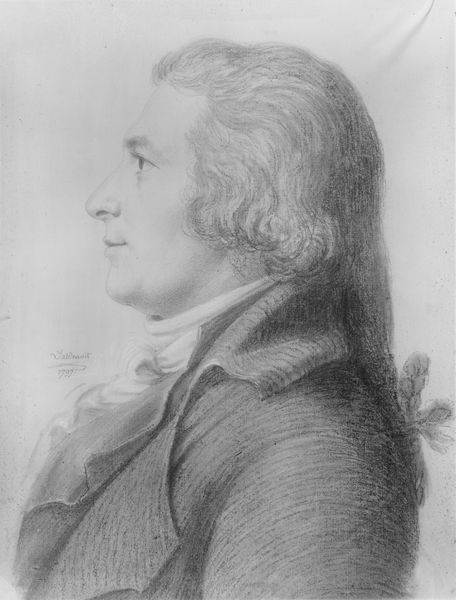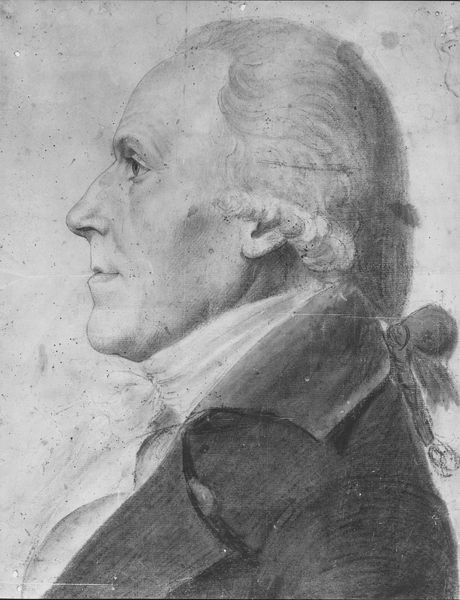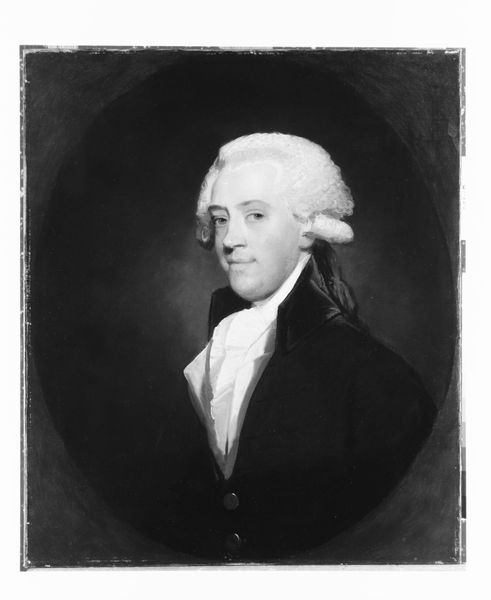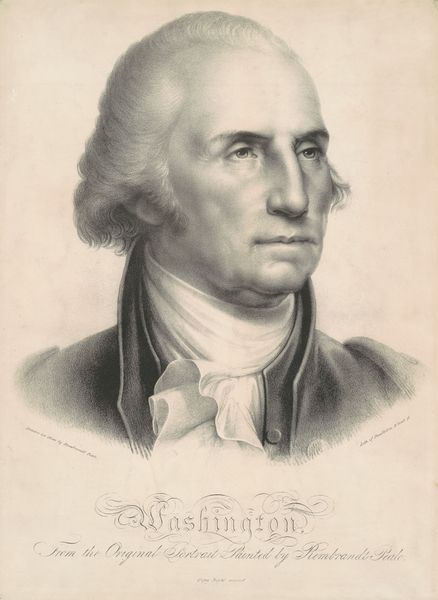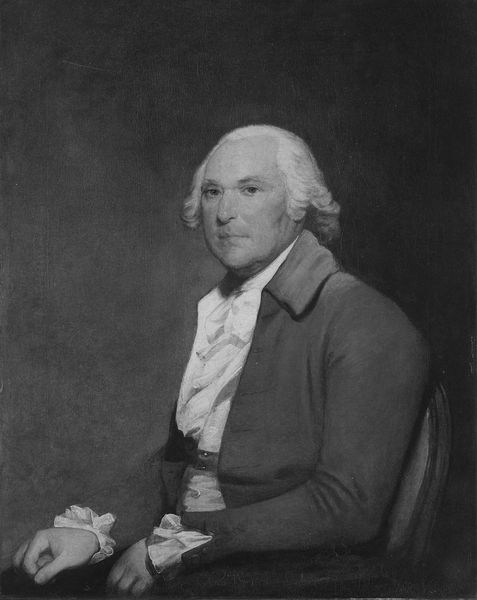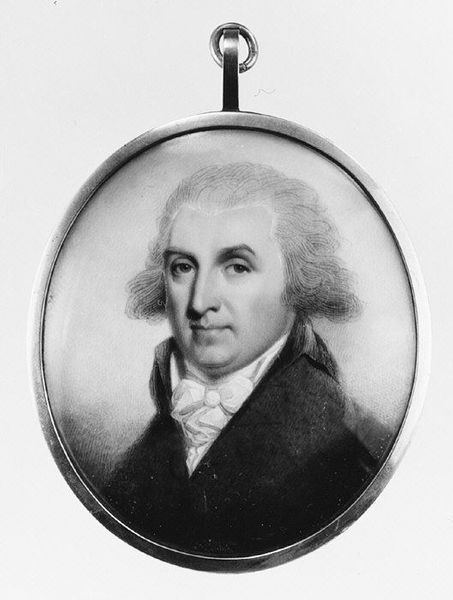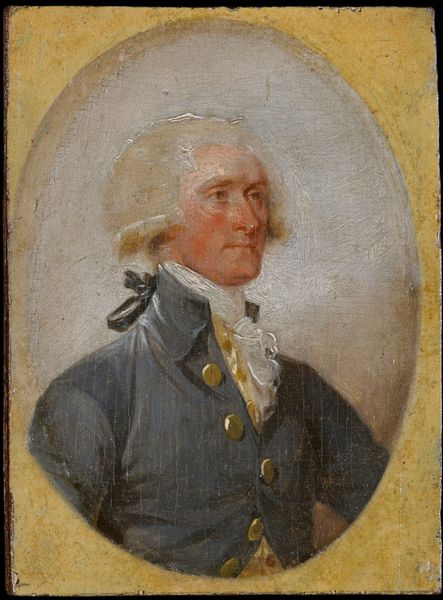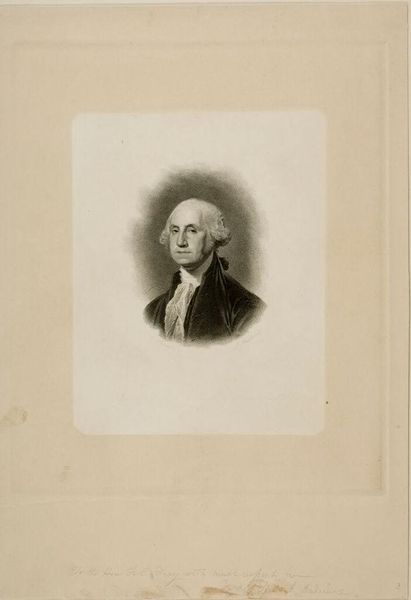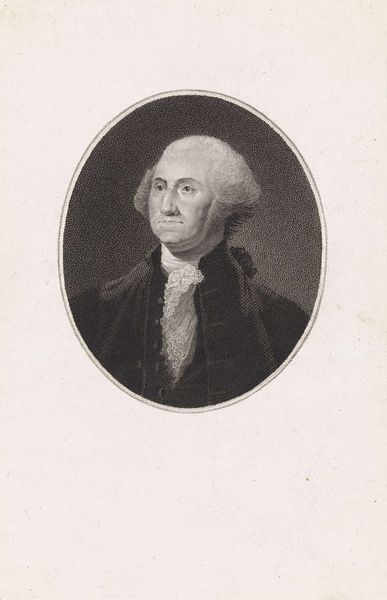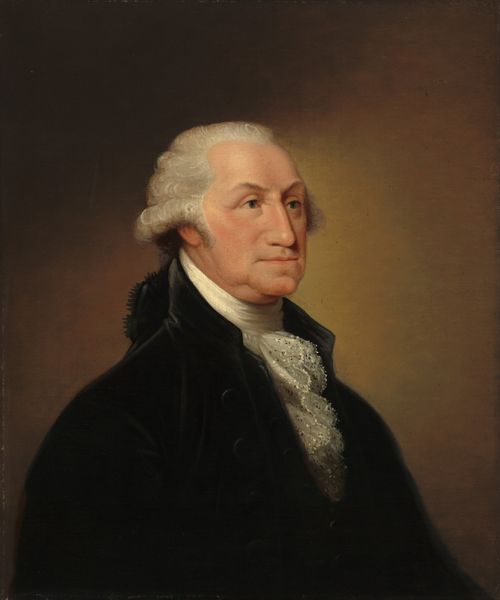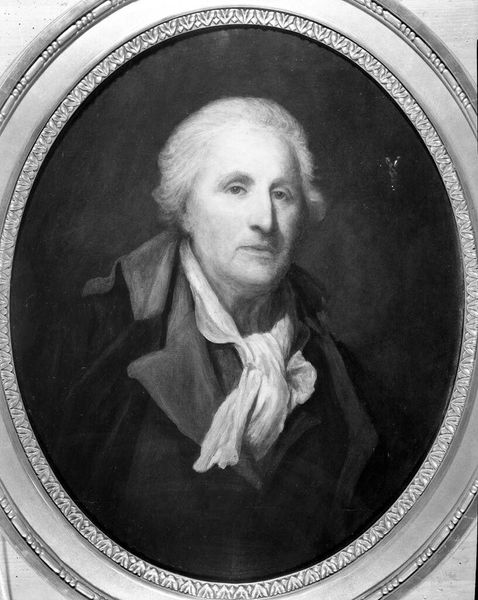
drawing, pencil, charcoal
#
portrait
#
drawing
#
neoclacissism
#
pencil sketch
#
charcoal drawing
#
male portrait
#
pencil
#
portrait drawing
#
charcoal
#
history-painting
#
academic-art
Dimensions: 21 1/2 x 14 3/8 in. (54.6 x 36.5 cm)
Copyright: Public Domain
Editor: Here we have Thomas Bluget De Valdenuit’s pencil and charcoal drawing, *Governor George Clinton*, dating from 1794 to 1797. The man portrayed definitely carries himself with an air of authority. I'm struck by the artist's delicate rendering of Clinton’s features, despite the seemingly austere mood. How do you interpret this work, given the time period and subject? Curator: Well, let's consider the context. This was created in the early Federal period in the US, during a time of significant social and political upheaval. Clinton was a major figure—Governor of New York, Vice President—deeply embroiled in the debates around federalism and states' rights. De Valdenuit’s choice of the profile view evokes classical portraiture, specifically neoclassicism that emphasized reason and civic virtue. But does the rendering, particularly the intense focus on the face, reveal a certain tension beneath that veneer of authority, a sense of the weight of leadership, perhaps even of internal conflict given the highly charged political climate of the time? Editor: I see what you mean. The slight furrow of his brow does suggest a more complex emotional landscape than a purely celebratory portrait would convey. Curator: Exactly. And consider the artistic process itself: drawing, especially in charcoal and pencil, has an immediacy, an intimacy. Does it allow for a more direct engagement with the subject's personality than a formal oil painting might? The choice to depict him in this medium seems telling, like a deliberate decision to bring the weighty figure of the Governor down to an accessible scale. Who, then, is this image for, and what's its intended purpose? Editor: Perhaps a way to connect Clinton to the everyday citizen, grounding his power in something relatable and human. It encourages you to think of leaders beyond their political roles. Curator: Precisely. Art then, and now, is always a powerful tool for negotiating identity and power. Thank you for your insight. Editor: And thank you; I hadn’t thought about the choice of medium as a conscious political act before.
Comments
No comments
Be the first to comment and join the conversation on the ultimate creative platform.
